Crusty Artisan Bread
This post may contain affiliate links. Read my full disclosure policy.
This crusty bread recipe is astonishingly easy—no kneading required—and makes three beautiful loaves, which you can bake as needed.
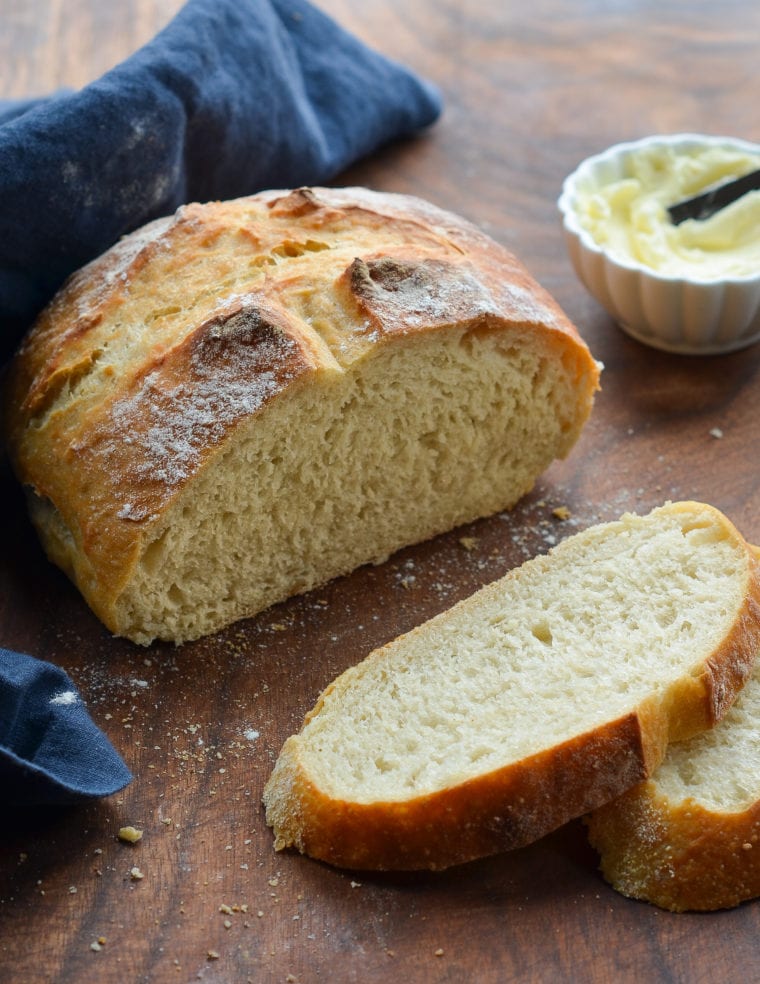
This homemade artisan bread recipe is astonishingly easy, and it makes enough for three delicious loaves, which you can bake as needed. What’s more, the dough takes just five minutes to make, does not require kneading or any special equipment, and can rest in the fridge for up to two weeks (the flavor becomes more complex the longer it sits). The recipe is modestly adapted from one of my favorite baking books, Artisan Bread in 5 Minutes A Day by Jeff Hertzberg M.D. and Zoë François.
Table of Contents
What You’ll Need To Make Crusty Artisan Bread
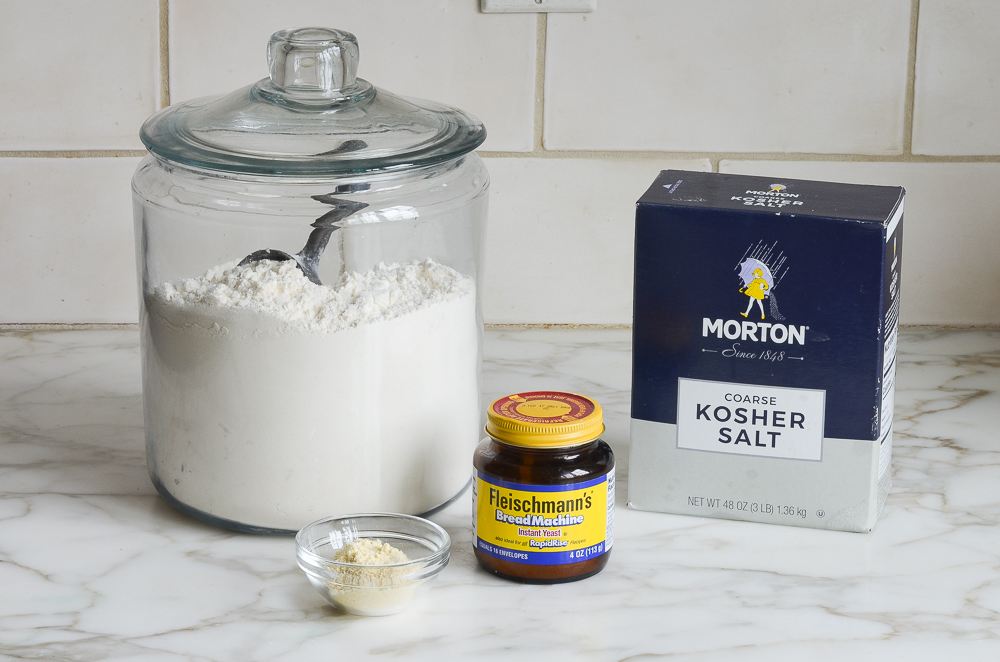
This recipe has just four ingredients: all-purpose flour, instant yeast, kosher salt, and water. (The cornmeal is for dusting the pan.) As you can see, I use instant (or rapid-rise) yeast. Active dry yeast may be used instead of instant yeast, however, the dough will take longer to rise. To give active dry yeast a boost, you can dissolve it in the lukewarm water and let it sit until frothy, about 10 minutes. After that, add it to the flour and proceed with the recipe.
How To Make Crusty Artisan Bread
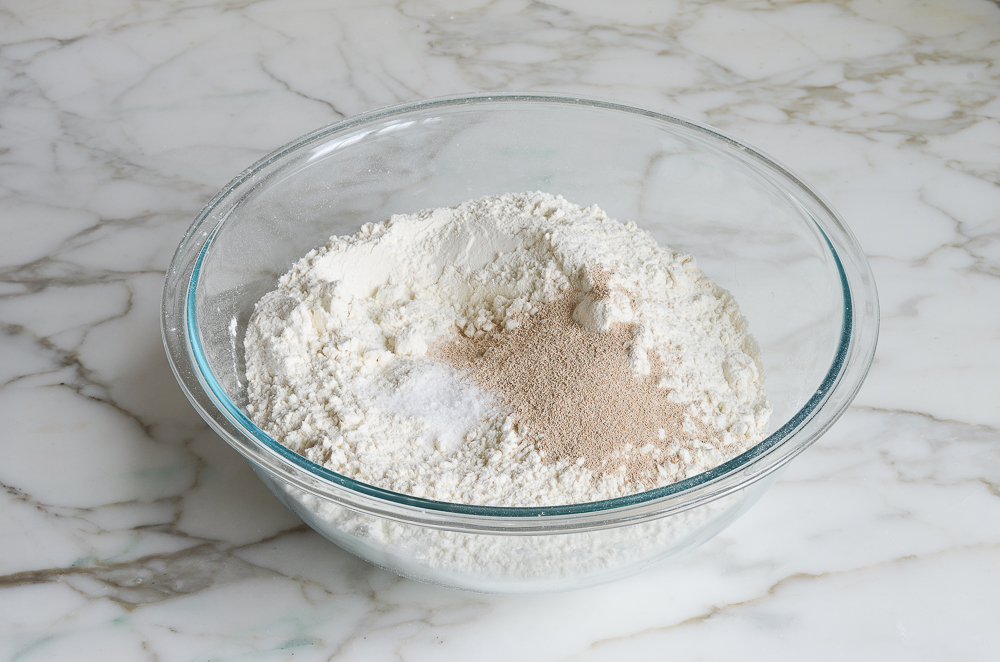
In a very large (6-quart) bowl, combine the flour, salt, and yeast. Mix to combine.
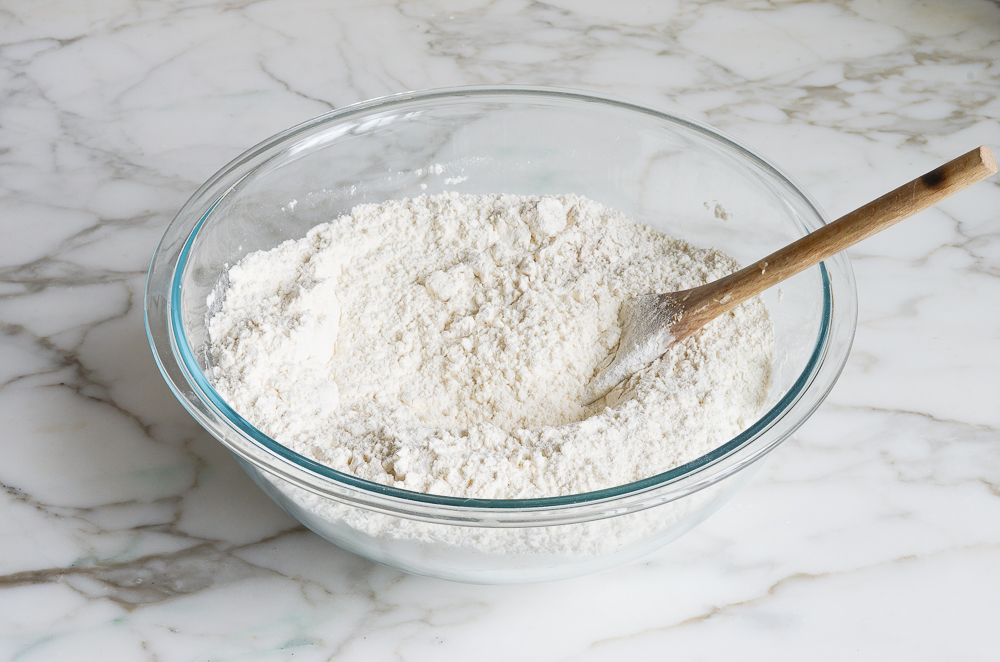
Add 3 cups of lukewarm water (no need to be exact but lukewarm is about 100°F).
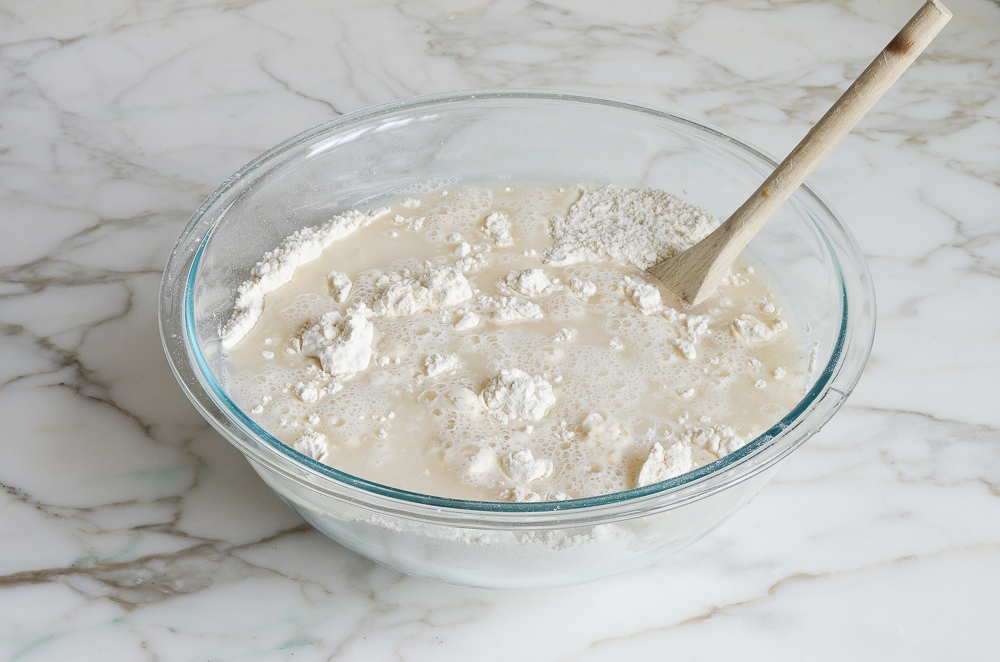
Stir with a wooden spoon until the mixture is uniformly moist, without any patches of flour.
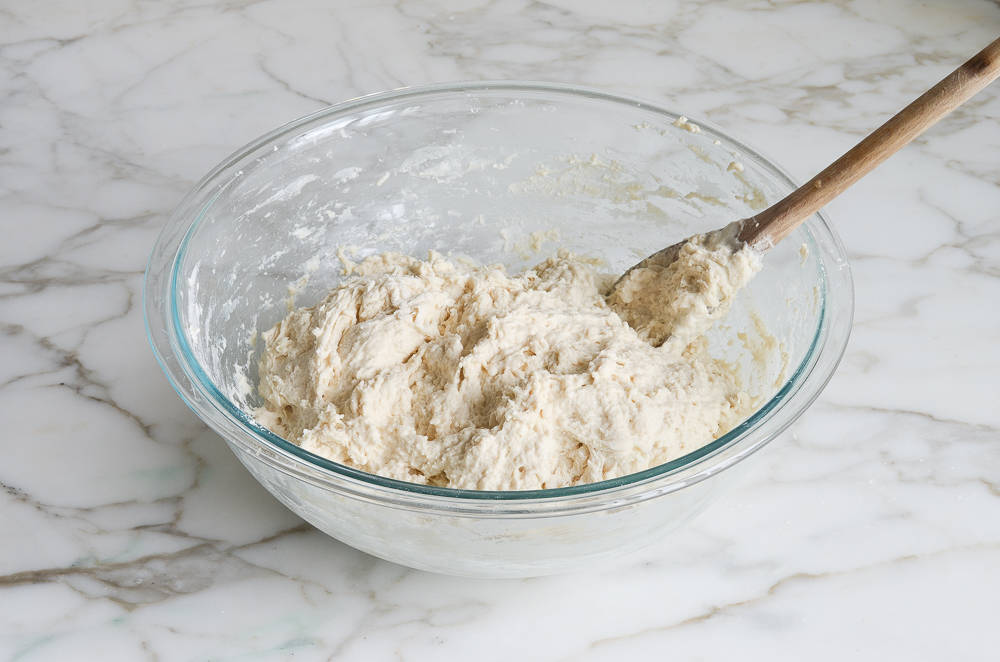
The dough should be sticky and conform to the shape of the bowl. If your dough is too dry, add a few tablespoons more warm water. If it’s too wet, add a few tablespoons of flour. Cover the bowl loosely with plastic wrap and let it sit on the counter in a warm spot for 2 hours. As you can see below, it will rise a lot!
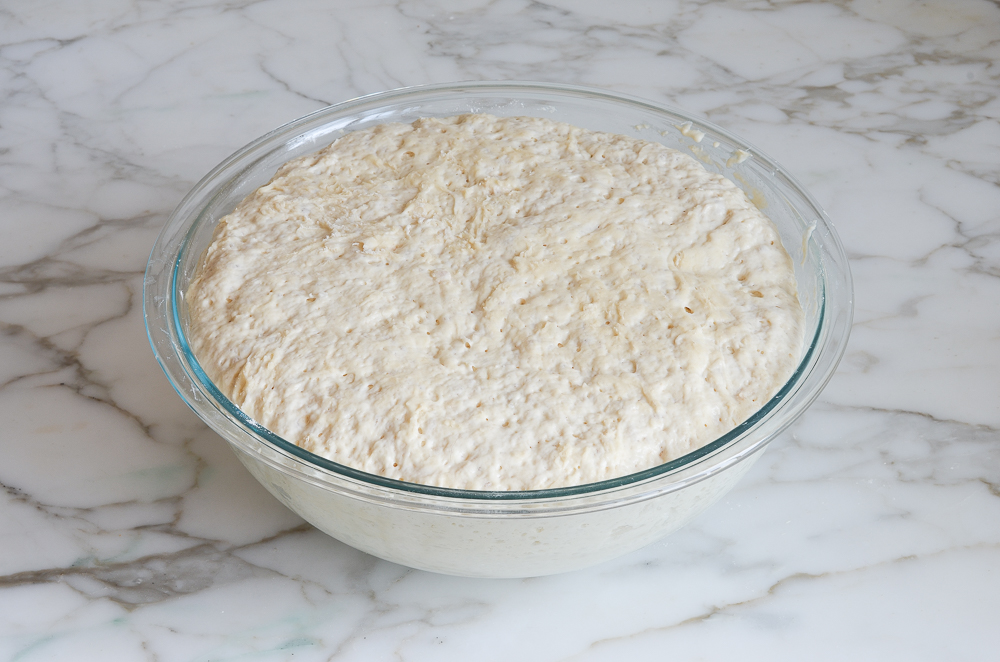
When you’re ready to bake a loaf, pull out one-third of the dough.
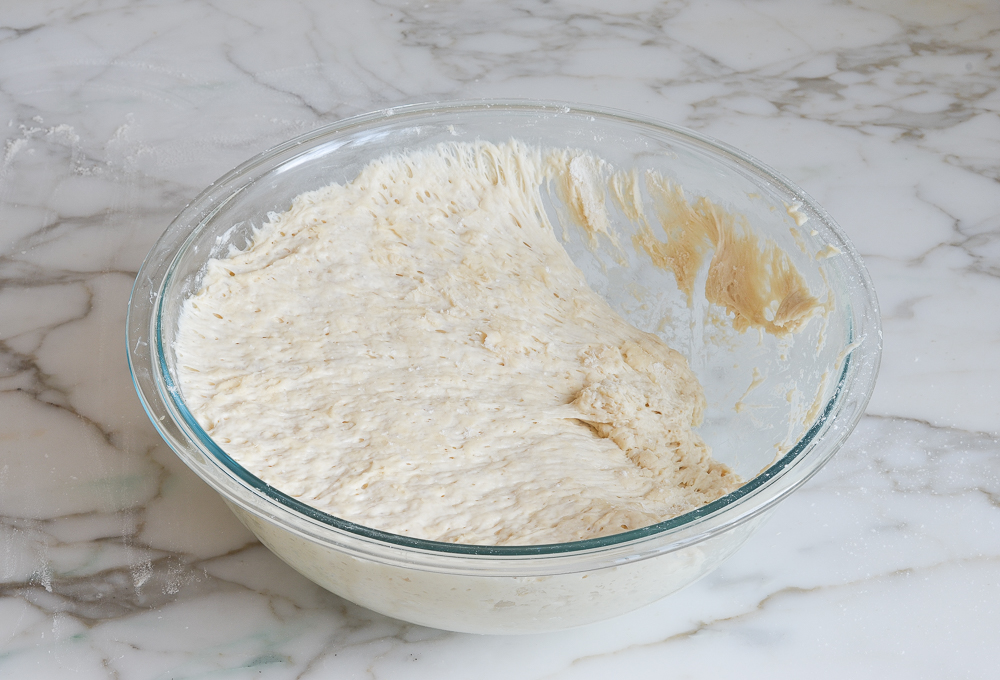
Coat the outside lightly with flour (you don’t want to incorporate more flour into the dough, you just want to be able to handle it). Gently work the dough into a smooth ball, stretching the surface and tucking the ends underneath.
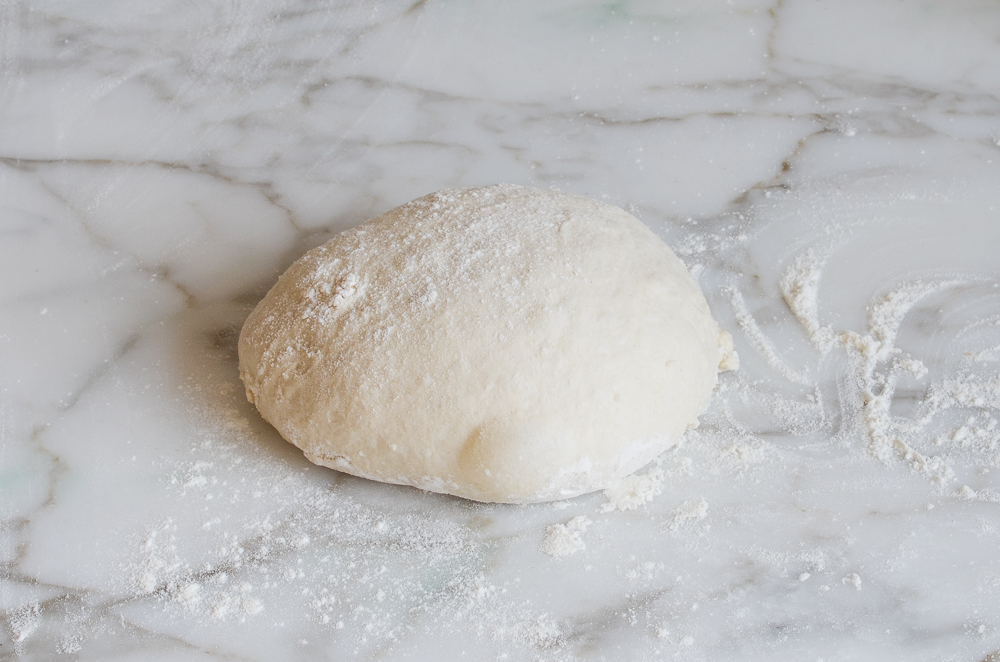
Put the dough ball onto a cornmeal-dusted baking sheet and let rest at room temperature, uncovered, for about 40 minutes. (If the dough has been refrigerated, allow it to rise for 60 minutes, or up to 90 minutes if you want a more open and airy crumb structure.) The dough will rise a bit. It may also spread/flatten a bit; that’s okay.
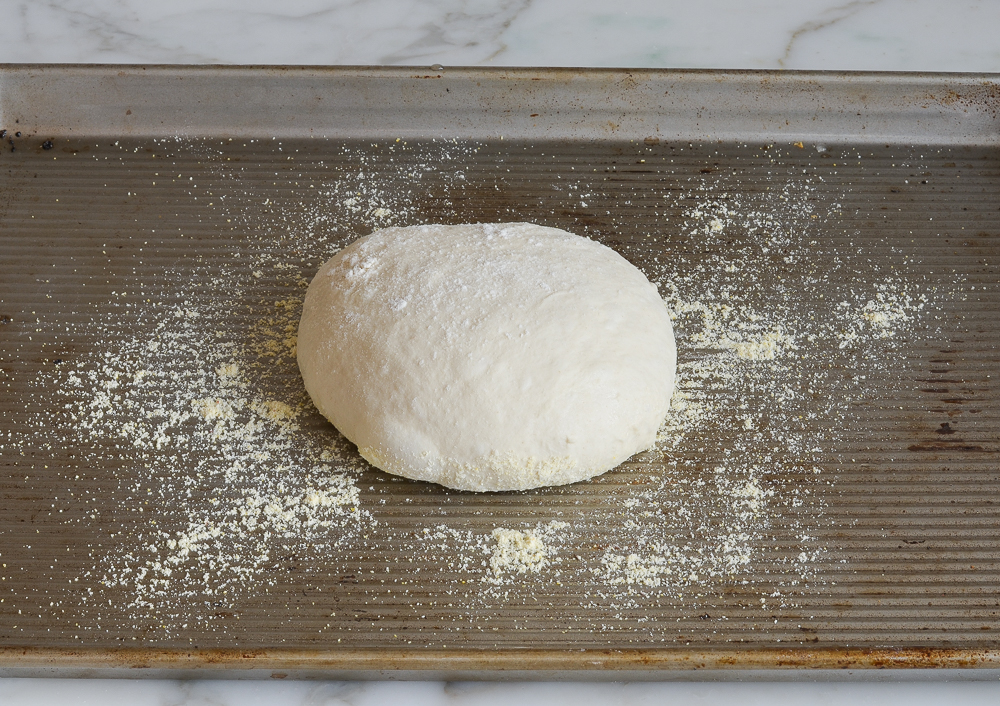
The dough will rise a bit.
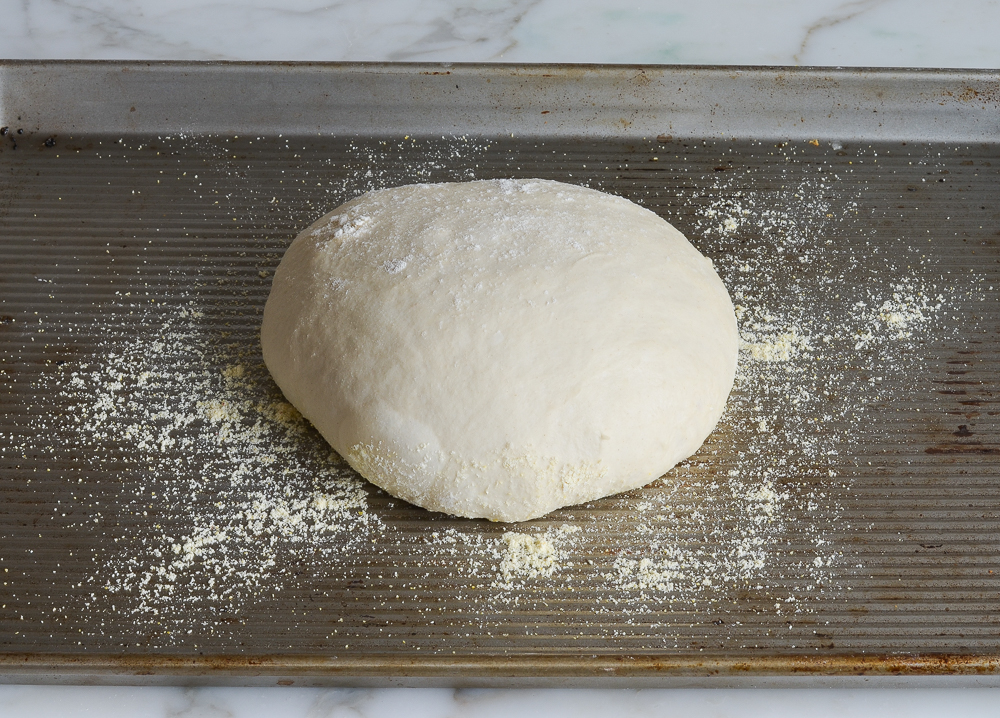
Generously dust the dough with flour. Using a sharp knife, make a few 1/2-inch-deep slashes in the dough — a scallop, cross, or tic tac toe pattern all look nice.
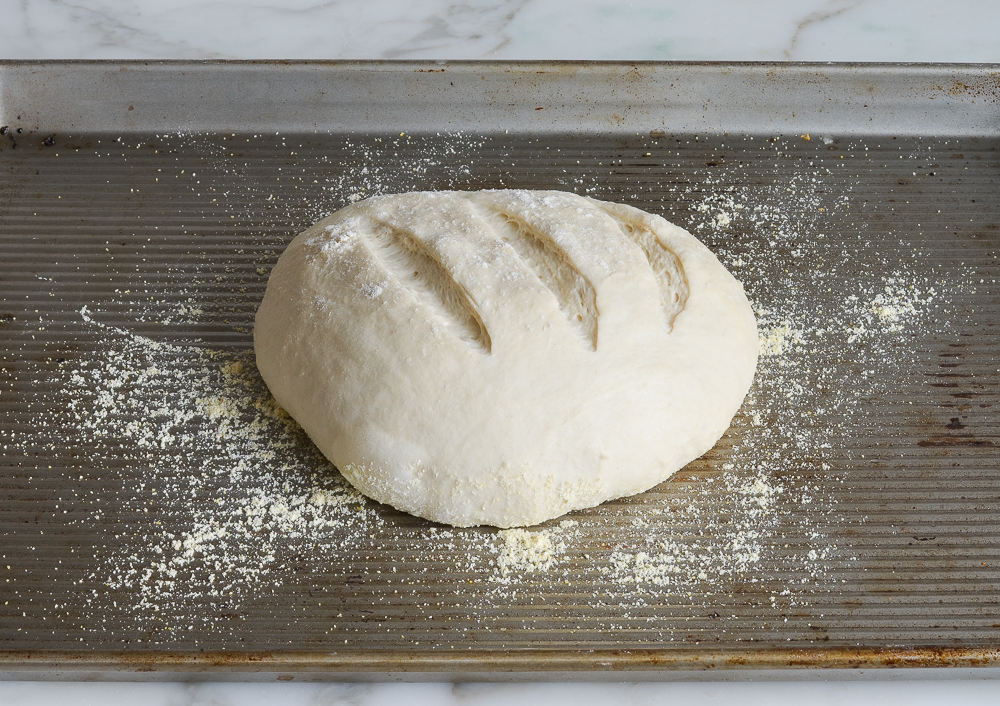
Set a metal pan on the bottom rack of a preheated 450°F-oven. Slide the baking sheet with the dough into the oven, and carefully fill the metal cake pan with one cup of hot tap water. This creates steam in the oven. (Try to do this quickly so as not to let heat out of the oven.) Bake until the loaf is golden brown, about 30 minutes. Cool completely on a wire rack.
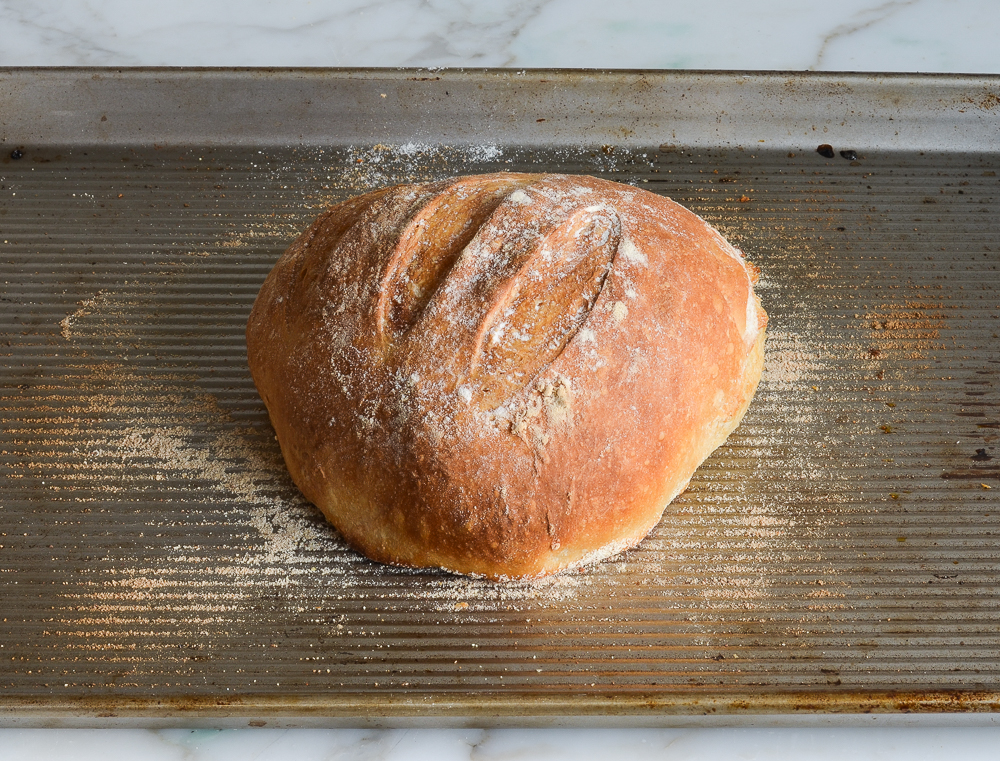
This bread is best enjoyed fresh on the day it is made. Once sliced, place the loaf cut-side down on a cutting board or plate and leave it uncovered.
How To Freeze
The dough can be portioned into thirds and frozen in airtight plastic containers for up to 1 month. Defrost the dough in the refrigerator overnight, then shape, rest and bake as usual. The baked loaves can also be frozen whole or sliced. Wrap in a zip-top freezer bag and freeze for up to 1 month. To thaw, take the bread out of the freezer and let it come to room temperature, about 3 hours. Reheat in a 350°F oven until warmed through, about 10 minutes.
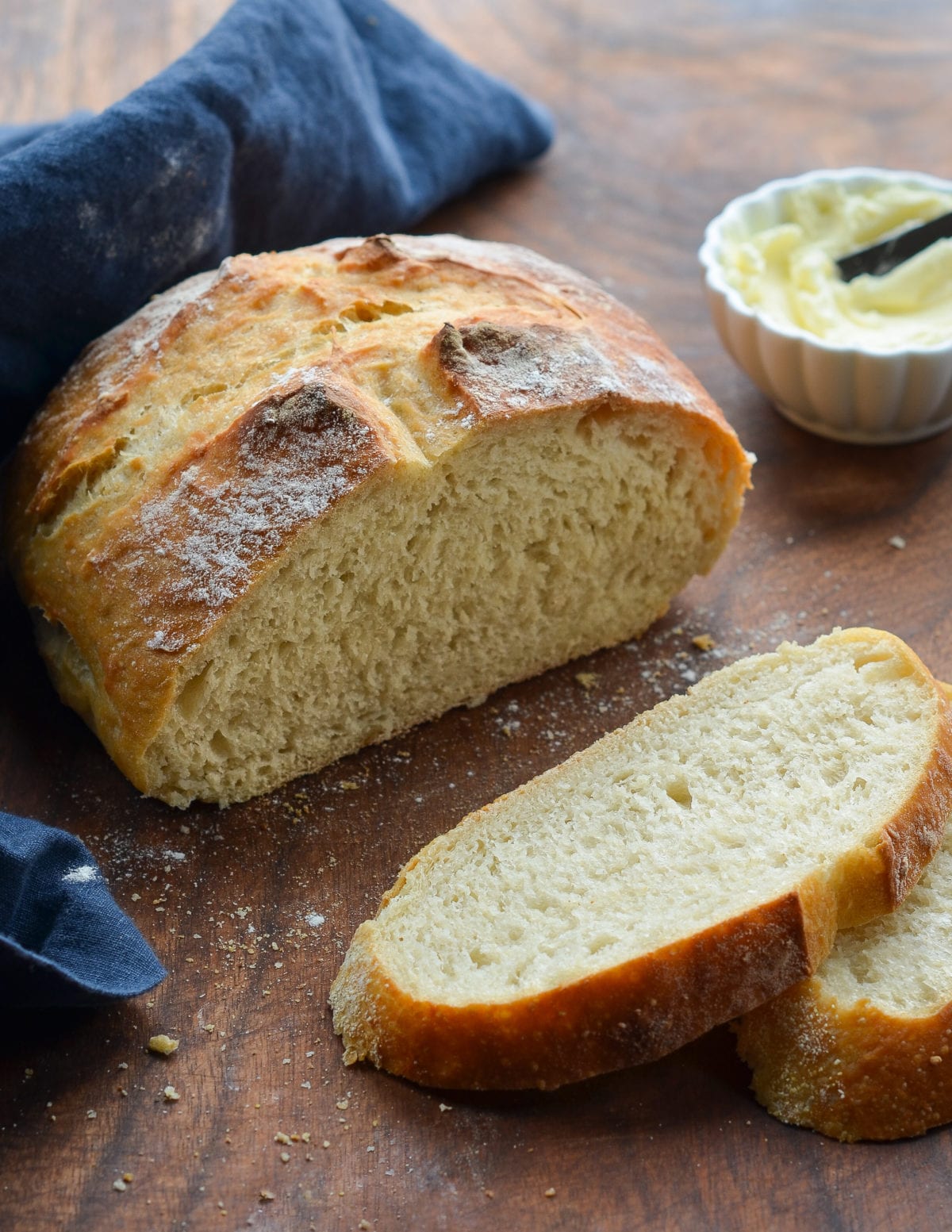
You May Also Like
Crusty Artisan Bread
This crusty bread recipe is astonishingly easy—no kneading required—and makes three beautiful loaves, which you can bake as needed.
Ingredients
- 6½ cups all-purpose flour, spooned into measuring cup and leveled-off (preferably King Arthur; see note)
- 4 teaspoons kosher salt
- 1½ tablespoons instant/rapid-rise yeast (see note)
- 3 cups lukewarm water (no need to be exact but lukewarm is about 100°F)
- Cornmeal, for dusting the pan
Instructions
- In a very large (6-quart) bowl, whisk together the flour, salt, and yeast. Add the water and stir with a wooden spoon until the mixture is uniformly moist, without any patches of flour. The dough should be sticky and conform to the shape of the bowl. If your dough is too dry, add a few tablespoons more warm water. If it's too wet, add a few tablespoons of flour. (See the step-by-step photos for guidance on what the dough should look like.) Cover the bowl loosely with plastic wrap and let it sit on the counter in a warm spot for 2 hours. If you plan to bake a loaf immediately, proceed to the next step. Otherwise, place the bowl of dough in the refrigerator to be used over the next 14 days. (Once refrigerated, the dough will shrink back a bit; that's okay. Do not punch down the dough at any point, and keep it loosely covered with plastic wrap.)
- Dust a sturdy baking sheet with cornmeal.
- Dust the surface of the dough and your hands lightly with flour. Pull out one-third of the dough and coat the outside lightly with flour (you don't want to incorporate more flour into the dough, you just want to be able to handle it). Gently work the dough into a smooth ball, stretching the surface and tucking the ends underneath, adding more flour as needed so it doesn't stick to your hands. (Don't overwork the dough; this process should only take about 30 seconds.) Put the dough ball onto the prepared baking sheet and let it rest at room temperature, uncovered, for about 40 minutes. (If the dough has been refrigerated, allow it to rise for 60 minutes, or up to 90 minutes if you want a more open and airy crumb structure.) The dough will rise a bit. It may also spread/flatten a bit; that's okay.
- Preheat the oven to 450°F. Set one rack in the lowest position of the oven and one rack in the middle position. Place a metal pan (any metal cake pan or broiler pan will work; just don't use glass) on the bottom rack. (You will fill this with water later to create steam in the oven).
- Generously dust the dough with flour. Using a sharp knife, make a few ½-inch-deep slashes in the dough -- a scallop, cross, or tic tac toe pattern all look nice.
- Slide the baking sheet with the dough into the oven, and carefully fill the metal cake pan with one cup of hot tap water. (Try to do this quickly so as not to let heat out of the oven.) Bake until the loaf is golden brown, about 30 minutes. Cool completely on a wire rack.
- This bread is best enjoyed fresh on the day it is made. Once sliced, place the loaf cut-side down on a cutting board or plate and leave it uncovered. (If it lasts beyond a day, I suggest slicing and freezing.)
- Freezer-Friendly Instructions The dough can be portioned into thirds and frozen in airtight plastic containers for up to 1 month. Defrost the dough in the refrigerator overnight, then shape, rest and bake as usual. The baked loaves can also be frozen whole or sliced: Wrap in a zip-top freezer bag and freeze for up to 1 month. (If you plan to use slices one at a time, place pieces of parchment between them so they don't stick.) To thaw, take the bread out of the freezer and let it come to room temperature on the countertop. Reheat in a 350°F oven until warmed through, about 10 minutes.
- Note: Active dry yeast may be used instead of instant/rapid-rise yeast, however, the dough will take longer to rise. To give active dry yeast a boost, you can dissolve it in the lukewarm water and let it sit until frothy, about 10 minutes. After that, add it to the flour and salt, and proceed with the recipe.
- Note: I use King Arthur flour, which is higher in protein than some other all-purpose flours. If using a flour with a lower protein content, such as Gold Medal, you will likely need to add a few more tablespoons of flour.
Nutrition Information
Powered by ![]()
- Serving size: 1 slice
- Calories: 100
- Fat: 0 g
- Saturated fat: 0 g
- Carbohydrates: 21 g
- Sugar: 0 g
- Fiber: 1 g
- Protein: 3 g
- Sodium: 64 mg
- Cholesterol: 0 mg
This website is written and produced for informational purposes only. I am not a certified nutritionist and the nutritional data on this site has not been evaluated or approved by a nutritionist or the Food and Drug Administration. Nutritional information is offered as a courtesy and should not be construed as a guarantee. The data is calculated through an online nutritional calculator, Edamam.com. Although I do my best to provide accurate nutritional information, these figures should be considered estimates only. Varying factors such as product types or brands purchased, natural fluctuations in fresh produce, and the way ingredients are processed change the effective nutritional information in any given recipe. Furthermore, different online calculators provide different results depending on their own nutrition fact sources and algorithms. To obtain the most accurate nutritional information in a given recipe, you should calculate the nutritional information with the actual ingredients used in your recipe, using your preferred nutrition calculator.

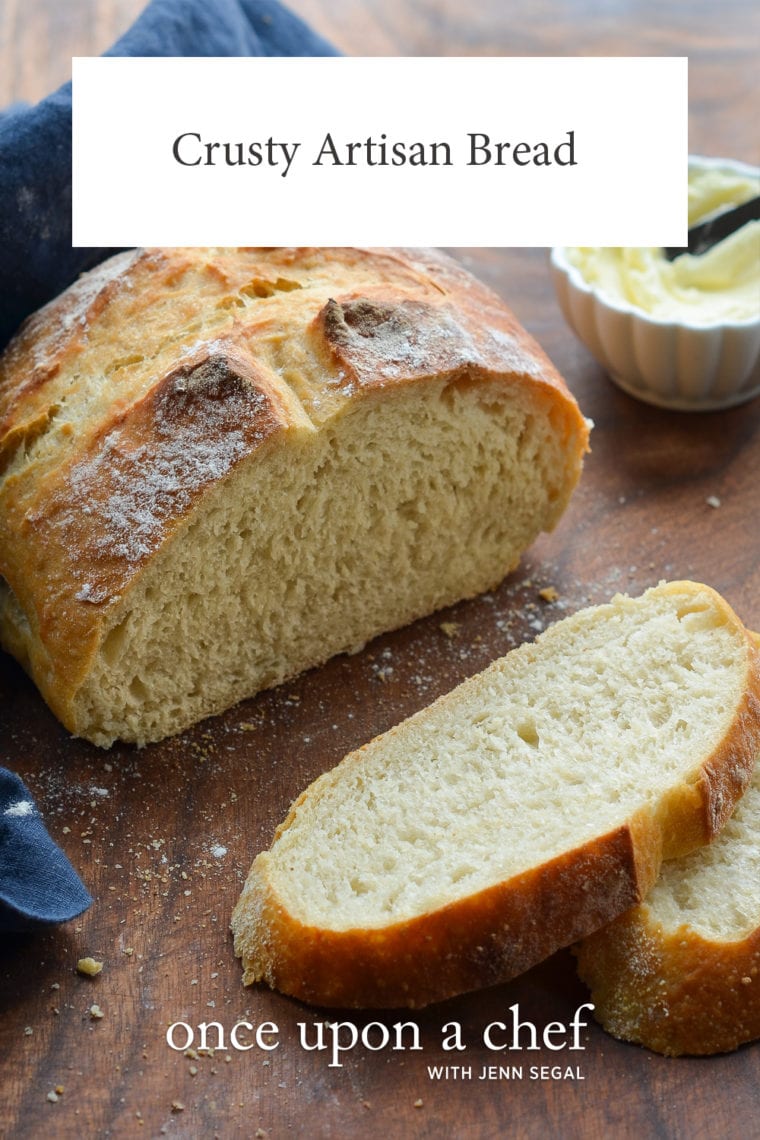
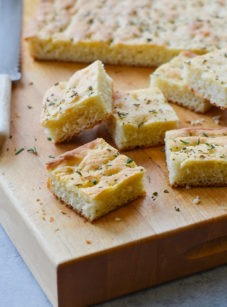
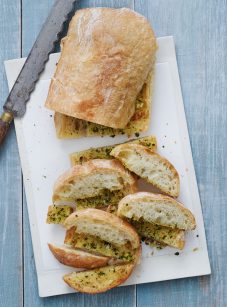
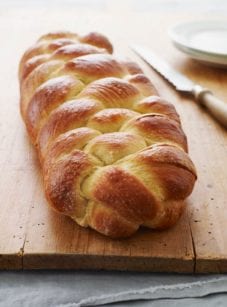
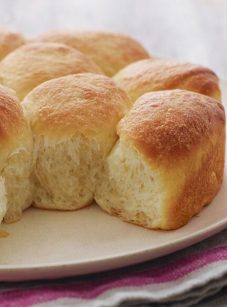
I have coarse salt and Himalayan salt but not kosher salt. What would be a good substitute. Thanks. I love your site. Recipes are no fail and delicious. You are my go to
Either one is fine but I’d probably go with the Himilayan. Hope you enjoy the bread!
Jenn I have a question this is my second time making the recipe, it’s great . The bread has completely stuck to the pan even with cornmeal on two occasions. What did I do wrong? Thanks Emilie
Hi Emilie, Sorry you had a problem with the bread sticking! Next time you may want to try parchment paper or grease the baking sheet with nonstick cooking spray.
I use a silpat under mine and it works perfectly!
I love this recipe but when I freeze my extra loaves that have been cooked the crust is very flaky , it still tastes good but it doesn’t look nice
What am I doing wrong? My cooked loaves are very crumbly after freezing.
Hi Linda, you mentioned in your last comment that the crust is flaky after freezing. Is it just the crust you’re referring to here or is the interior of the bread as well?
Made for the first time this afternoon. Easy and delicious! Your recipes are awesome….they consistently turn out perfectly! Thanks so much.
Hi Jenn
I have been making this wonderful bread for at least a year. The question I have is that over the past few months, the bread is not rising as much as it did in the past and the size of the loaves are a lot smaller. Same great taste but not so big. My other bread recipes have stayed the same so I can’t see a problem with my yeast. Do you have a test to see if yeast is still o.k.? Any helpful ideas on this ‘small’ problem?
Thanks for every one of your recipes!
Tannis
Hi Tannis, That’s so strange. I automatically assumed it was your yeast, but it confuses me that your other breads have been okay. Here’s some guidance on how to test your yeast. Please LMK if I can help in any other way.
Has your climate changed drastically over the past months? Perhaps your other breads have other leaveners, such as eggs or soda, whereas this recipe only relies on the yeast, which is more dependant on ambiant temperature and humidity. Just a few thoughts. Hope you figure it out soon!
Can you use Almond flour instead to make it gluten free? Have made this bread numerous times and really enjoy eating it. Great recipe. Thank you
So glad you like it, Charles! I wouldn’t recommend almond flour here though — sorry!
Could you use gluten free 1:1 flour?
Hi Joani, I haven’t made this with gluten-free flour so I can’t say for sure how it would turn out – I’m sorry! If you do happen to try it please LMK how it turns out!
This recipe is so good – I could just live on this bread! Thank you, thank you, thank you Jenn.
Believe the 5 star reviews. Just made this, blown away how good this is!!! Bakery quality artisan bread. LOOK NO FURTHER!
Hi Jenn..this is my 1st attempt to make bread. I made the 3 loaves for a Lenten soup/bread dinner. 31 attended and the response was extremely favorable. I did have trouble with the directions as my dough rose a good 2″ above the bowl. I put the dough into the refrig to stop the rise…then pulled out dough for 3 loaves. I baked the first 2 for 30 minutes and they were not golden but looking at the picture I thought it was okay. then I put in the last loaf and that one came out with more color so I put the first two back into the oven for 10 minutes. I might think all 3 loaves were more dense than yours, however, all went well and no one became sick nor complained.
I want to make 2 copies for friends however the print is soooo small they would not be able to read the directions. Do you know how to use a larger font when printing?
I have used so many of your recipes however my first for bread making. I did take a picture however I do not know Instagram. sorry.
Hi Dorothy, glad that the bread came out nicely despite some concerns when the dough was rising! When printing, I believe that if you want to make the text larger, you’d need to change a setting in your printing preferences (versus something on the website). You may be able to google it if it’s not clear when your print dialogue box pops up.
Thank you so much, since finding this recipe a week ago I’ve made 6 loaves. There’s nothing like the smell and taste of fresh homemade bread. The recipe is so simple and efficient.
Tim. Z.